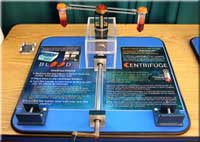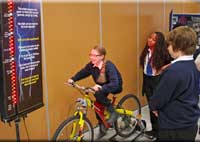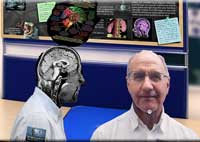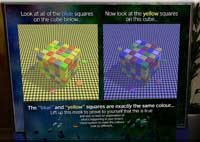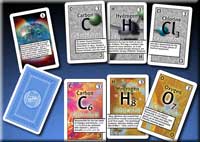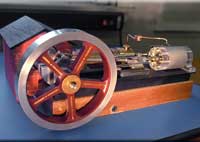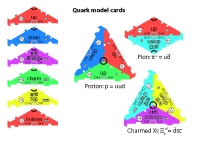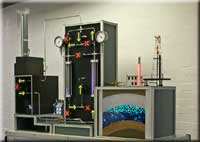Interactive design and construction
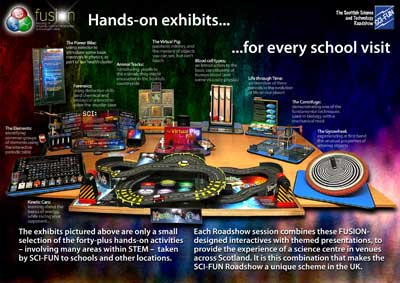 The SCI-FUN Roadshow takes forty or so hands-on science exhibits to schools throughout Scotland. These exhibits are primarily directed at the S1/S2 year group, although they have also been successfully used by adults and primary pupils, at science festivals and other public events.
The SCI-FUN Roadshow takes forty or so hands-on science exhibits to schools throughout Scotland. These exhibits are primarily directed at the S1/S2 year group, although they have also been successfully used by adults and primary pupils, at science festivals and other public events.
In order to ensure that the Roadshow can carry out its tasks in a reasonable time (the group can fill a school hall in 90 minutes, and clear it in 60), we have, over the years, developed some basic rules, regarding the production of SCI-FUN (and now FUSION) exhibits.
Exhibits are designed to be: robust; highly modular; easy to set up and take down; simple to use; safe; and (where possible) to have multi-layered content. (The poster opposite shows a few of the exhibits; click on the image for a larger version.)
An interactive design tutorial
Click here, or on the menu item on the left, to view a short document, which we have made available online (and as a PDF file). It provides some brief guidelines as to the design of an interactive exhibit, and it also underpins the design ethos of the FUSION team, when dealing with exhibits that are more complex than the traditional Roadshow interactive.
Here are a few examples, to give an idea as to the different types of exhibit that can be constructed by FUSION. (SCI-FUN takes forty to fifty exhibits to schools as part of the Roadshow.)
Click on each image below for a larger version.
|
|
|
|
|
|
The centrifuge
|
The power bike
|
Body imaging
|
Cube illusion
|
|
One of our stem cell exhibits, this illustrates the principles of centrifugation; a mechanical version was built to let pupils interact directly with the exhibit.
|
Part of the health cluster of exhibits: pupils can find out just how much power they can generate, then measure their pulse afterwards, on our heartbeat exhibit.
|
Using MRI scans as a centrepiece, this exhibit discusses the different ways in which one can discover what is happening inside the body, without surgery.
|
One of a group of exhibits looking at a variety of different illusions, this full-size (A0) version illustrates the way in which our visual system understands relative colour.
|
|
|
|
|
|
|
|
|
|
|
Molecular memory
|
Steam engine
|
The quark game
|
The CCSI
|
|
One of the set of exhibits used by Primary pupils, this card game introduces children to the idea of molecular models
|
This working desktop model of a steam engine was entirely built using scrap metal pieces from the SCI-FUN/FUSION workshop.
|
Part of the PP4SS cluster, this card game introduces S5/6 pupils to some fundamentals of particle physics: quark combinations
|
The first of our research-oriented exhibits, a working, portable carbon capture and storage unit, more information on which can be found at this page.
|


